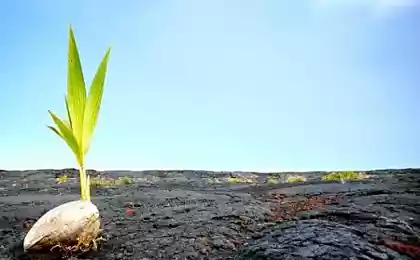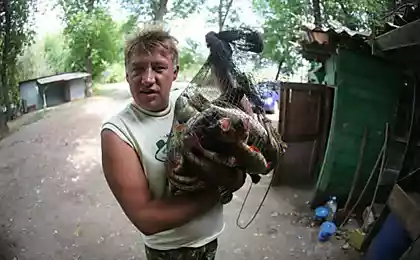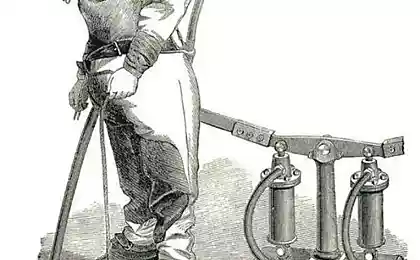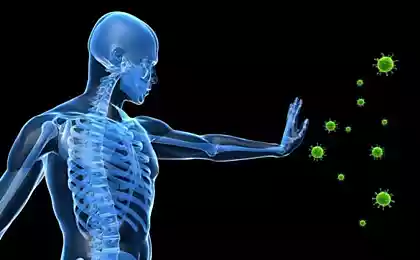618
Astrakhan live maholёty.
Alexander F. Mozhajskij, aviation pioneer, derived a formula of existence of the aircraft.
According to this formula, in relation to modern building materials, it is impossible to create a flapping wing machine heavier than 50 kilograms.
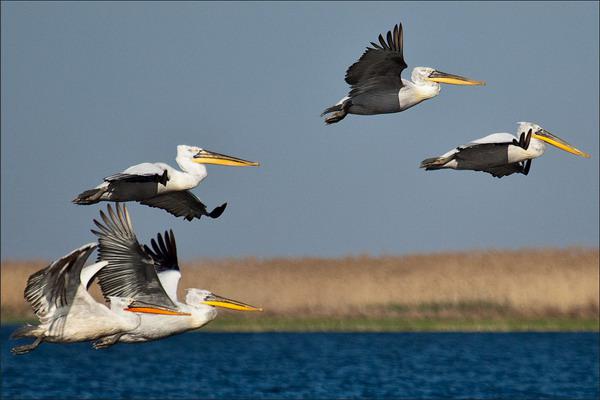
In the far-distant ancestors of birds had no wings, but they wanted to fly so much that the front legs of these animals evolved into flapping authorities
Also, as the picture on the cover, it pelicans.
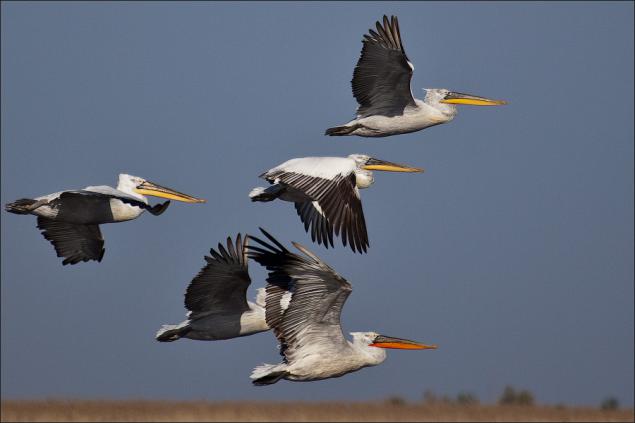
A little bit about the birds: the biggest flying bird - bearded bustards from South Africa.
The male can reach twenty kilograms of weight that fits into the equation Mozhaiskogo.
From the largest flightless birds - ostrich. Up to 160 kg. It is clear why he did not fly?
Swans.

The largest wingspan of an albatross from - up to three and a half meters. Fastest dive - Peregrine. It has a top speed of 300 km per hour.
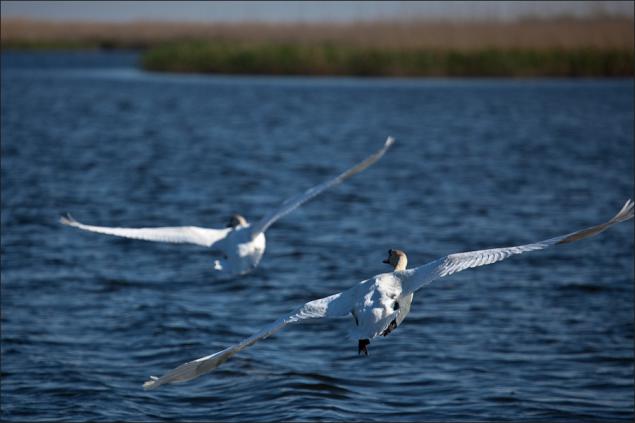
Fastest running African ostrich. It can accelerate to 72 kilometers per hour and run from any other running birds. By the way, even the ostrich and the largest eyes of any land animal in the world.
The diameter of the eyeball - 5 cm.
The fastest swimmer among birds - gentoo penguin. It floats in the water at a speed of 27 kilometers per hour.
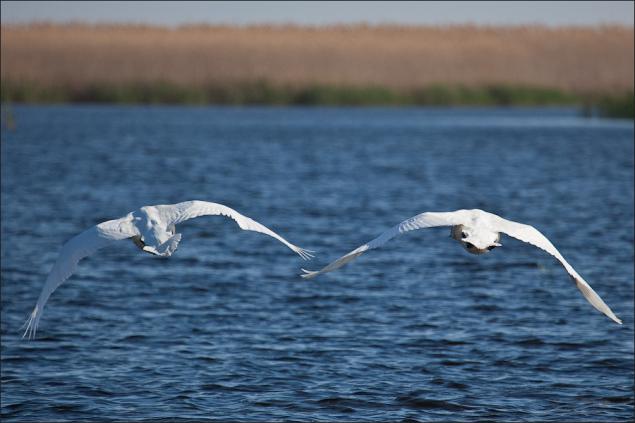
There is, in my opinion, is a very interesting fact: in 1990 in the Ross Sea near Antarctica, recorded a maximum depth diving emperor penguin - 483 meters! Without gear! The youngest (we know from childhood) - hummingbirds.

The longest in the air can hold Swift - from 2 to 4 years of non-stop and without maintenance. In August 1996 in Finland ringed common tern and caught her in January 1997 in Australia.
For five months she flew 25,500 kilometers. Without refueling.
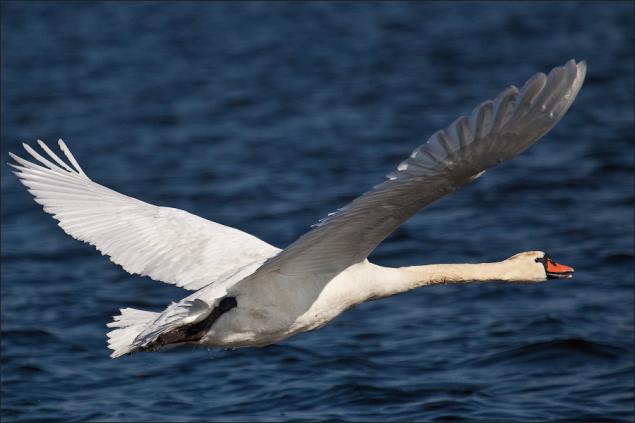
The longest feathers Yokohama chicken. In 1972 Japan recorded at a chicken pen in the 10 meters long. The longest beak Australian pelican - up to half a meter. Slower can fly all American woodcock - 8 kilometers per hour without breaking into a tailspin. Vultures slowest their wings - one stroke of a second, and all the same hummingbird waves 90 times per second. Cases observation aircraft pilots swans at altitudes greater than 8 km.
The white-tailed eagle.
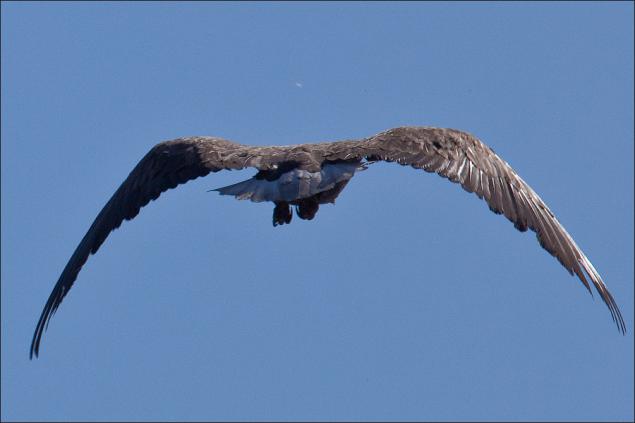
The brain of a woodpecker in the moment of impact, its beak on a tree suffers overload 10g.
In terms of clean air above the dove Peregrine sees at a distance of eight kilometers.
Cormorant.
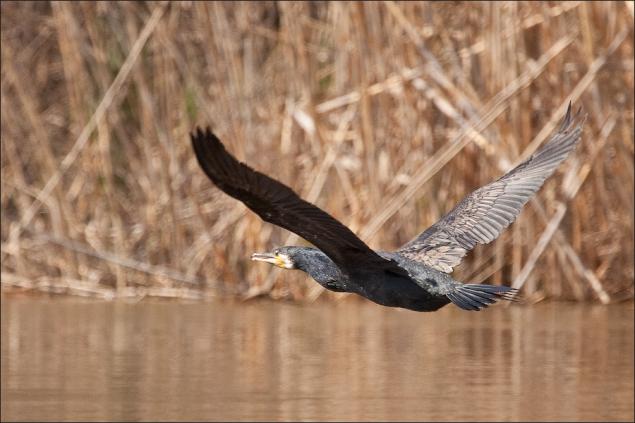
About overload experienced by them at the outlet of the dive do not know anything. By the way our train "Sapsan" were able to overclock only to 281 km. chas.V in straight flight no equal to our Russian white-tailed Swifts - 170 kilometers per hour.
Geese.

In birds, warm blood.
Bird's milk - it is just and only the cake.
Birds of every year change their plumage. Birds have good vision and hearing, they feel good taste and have no scent at all. In a stork and a pelican no voice.
Swan
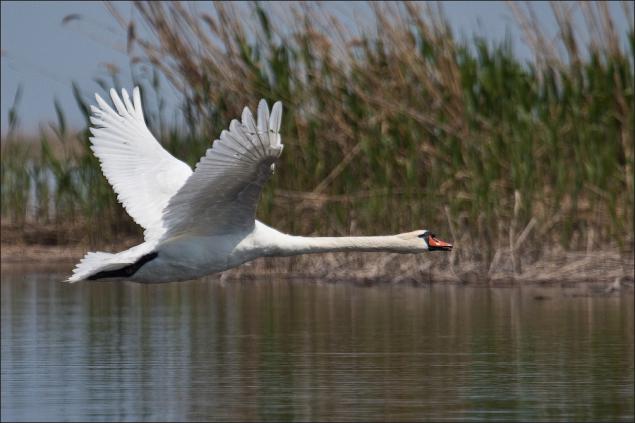
A! and "Blue Bird in nature!»
author photo kukuksumushu

Source:
According to this formula, in relation to modern building materials, it is impossible to create a flapping wing machine heavier than 50 kilograms.

In the far-distant ancestors of birds had no wings, but they wanted to fly so much that the front legs of these animals evolved into flapping authorities
Also, as the picture on the cover, it pelicans.

A little bit about the birds: the biggest flying bird - bearded bustards from South Africa.
The male can reach twenty kilograms of weight that fits into the equation Mozhaiskogo.
From the largest flightless birds - ostrich. Up to 160 kg. It is clear why he did not fly?
Swans.

The largest wingspan of an albatross from - up to three and a half meters. Fastest dive - Peregrine. It has a top speed of 300 km per hour.

Fastest running African ostrich. It can accelerate to 72 kilometers per hour and run from any other running birds. By the way, even the ostrich and the largest eyes of any land animal in the world.
The diameter of the eyeball - 5 cm.
The fastest swimmer among birds - gentoo penguin. It floats in the water at a speed of 27 kilometers per hour.

There is, in my opinion, is a very interesting fact: in 1990 in the Ross Sea near Antarctica, recorded a maximum depth diving emperor penguin - 483 meters! Without gear! The youngest (we know from childhood) - hummingbirds.

The longest in the air can hold Swift - from 2 to 4 years of non-stop and without maintenance. In August 1996 in Finland ringed common tern and caught her in January 1997 in Australia.
For five months she flew 25,500 kilometers. Without refueling.

The longest feathers Yokohama chicken. In 1972 Japan recorded at a chicken pen in the 10 meters long. The longest beak Australian pelican - up to half a meter. Slower can fly all American woodcock - 8 kilometers per hour without breaking into a tailspin. Vultures slowest their wings - one stroke of a second, and all the same hummingbird waves 90 times per second. Cases observation aircraft pilots swans at altitudes greater than 8 km.
The white-tailed eagle.

The brain of a woodpecker in the moment of impact, its beak on a tree suffers overload 10g.
In terms of clean air above the dove Peregrine sees at a distance of eight kilometers.
Cormorant.

About overload experienced by them at the outlet of the dive do not know anything. By the way our train "Sapsan" were able to overclock only to 281 km. chas.V in straight flight no equal to our Russian white-tailed Swifts - 170 kilometers per hour.
Geese.

In birds, warm blood.
Bird's milk - it is just and only the cake.
Birds of every year change their plumage. Birds have good vision and hearing, they feel good taste and have no scent at all. In a stork and a pelican no voice.
Swan

A! and "Blue Bird in nature!»
author photo kukuksumushu

Source:


